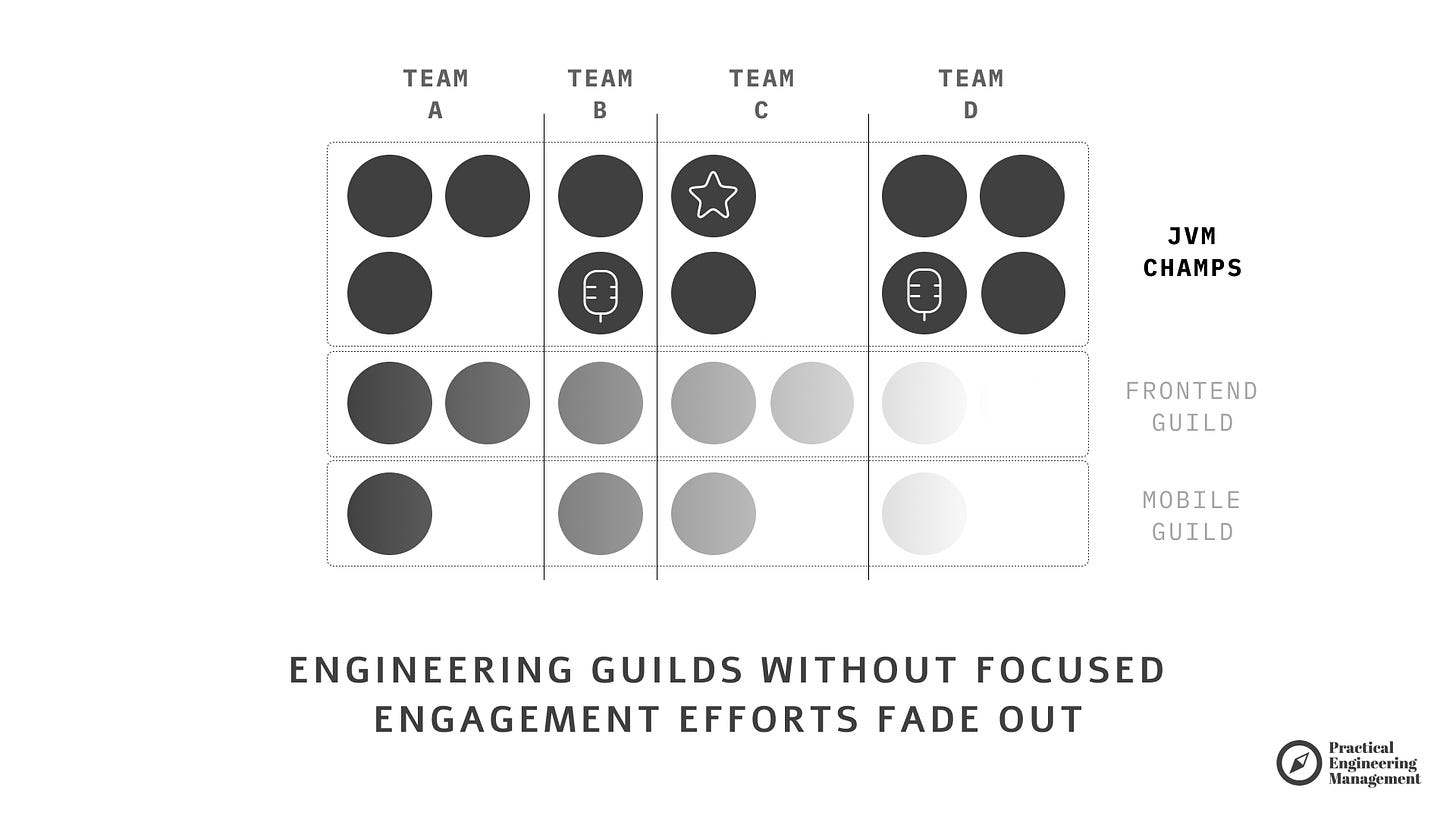From “Good Start” to “Great Culture”: Sustaining Your Engineering Guild
Part 2 of How to Make Your Engineering Guild Successful
In Part 1, we covered the fundamentals of how to set up an engineering guild by more than just applying the label to a meeting or a group of people. So you've got a solid North Star, structure, and data-driven approach. Yet, the real test is what happens after that initial excitement fades.
One of the guilds I led many years ago was a QA Guild. I took all QA engineers across the organization, set a weekly meeting with an agenda, a facilitator, meeting notes, well-crafted data dashboards, and the goal—make testing a respected practice and elevate the role of knowledgeable test automation engineers in the company. It had all the critical aspects mentioned in the previous article.
Yet, after a few very good meetings and initiatives (e.g., a great summary of What is Flakiness), the engagement slowly faded out, and the guild ceased to exist.

What happened? There were two major areas inadvertently neglected, which are critical to a guild's long-term success:
Proactive engagement management in a world of conflicting priorities. I will cover that in today's article.
Evolving the guild leader's role—from meeting facilitator to a leadership presence that influences the broader org, potentially growing into a platform team. We will explore this subject in the 3rd part of the series.
How to Build Engagement and Keep It High
Fancy data dashboards, high-level objectives, and interesting agendas will work nicely in the first guild meetings—until people realize this: An Engineering Guild is extra effort that creates more friction in product development. It’s not a meet-up with technology enthusiasts followed by pizza and networking. It’s a place where you highlight more problems or discuss great ideas you will never have time to deliver.
One example from my QA Guild was a metric: “Number of releases that went out without testing.” Engineers simply pushed code to production without running extensive testing scenarios. We discussed that for multiple weeks within the guild, only to see that nothing changed. It was one of the most discouraging things back then.
We tried taking our data to management, arguing that repeated untested releases raised our production risks. However, product deadlines consistently took precedence, and that mismatch drained morale in the guild. This led us to realize how critical it is to align with management and give them solid data points, not just opinions (a topic we’ll explore more in part 3 of the series).
Let’s explore a few ideas that can help maintain your guild’s engagement.
Keep an Eye on Friction and Reduce It
In the first stage, don’t look far. People won't prioritize attendance if your guild sessions demand a complicated video call setup, docs in random places, or last-minute schedule changes.
Fix all of these issues promptly and proactively:
Centralized Resources: Keep everything—agenda, past notes, relevant data—on a single doc or wiki page, always available and up to date. Attach the link to the calendar meeting and Slack channel. Share it with people repeatedly.
Consistency: If the schedule is unpredictable, engineers will default to ignoring it. Make sure the meeting time rarely moves or gets canceled. Go further than that. Stop tolerating laggards: start the meeting sharply and don’t wait. Six people waiting for 5–10 minutes for a single person to join is already tens of minutes of wasted time, not to mention the distractions.
Act on Feedback: This is critical. Your guild meeting won’t be perfect on the first try. You must ensure that people are heard and their opinions are respected.
“Feel free to share any feedback” is a leader's worst statement. In the beginning, you must collect it proactively. It’s not an option—people must know it’s their duty to contribute to the meeting structure.




